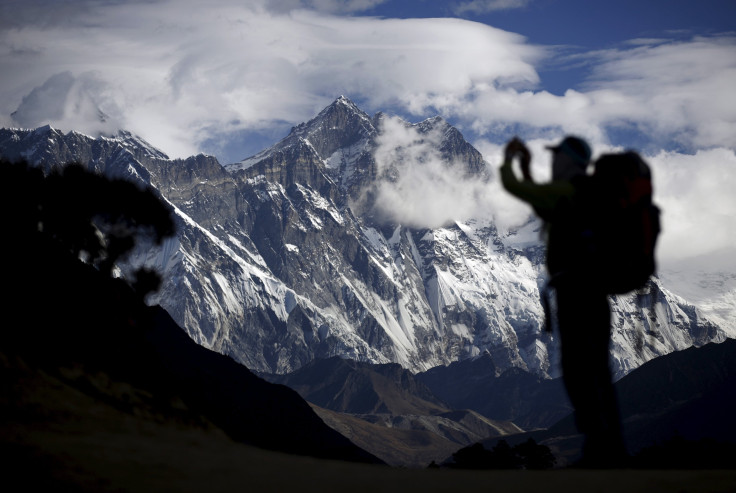Mount Everest Update: World's Highest Mountain Shrinking? Following 2015 Nepal Earthquake, Scientist To Measure Peak's Height

It looks like the world’s highest mountain might be shrinking. An expedition to Mount Everest has been scheduled later this year by the Indian government to measure the mountain's height to see if its elevation has changed following the 2015 Nepal earthquake, authorities announced.
The mountain’s height was previously measured soon after the 7.8 magnitude earthquake struck Nepal in April 2015 but will be reassessed to clear up reservations in the scientific community. According to satellite records, the earthquake lowered the height of the mountain’s peak.
Previous measurements assessed that the mountain dropped by approximately one meter – or 3.2 feet – and some scientists have reason to believe the height of other Himalayan mountain peaks may have also reduced in elevation.
“Two years have passed since the major Nepal earthquake. After that, there is a doubt in the scientific community that it is shrinking. That is one of the reasons [for the expedition]. Second reason is, it helps in scientific studies, plate movements, etc.,” Surveyor-General Swarna Subba Rao told the Hindustan Times.
The expedition is expected to take around a month for observations and then 15 days to calculate data, Rao added.
The 2015 earthquake caused more than 8,000 deaths, as well as over 17,000 injuries and damage to 600,000 buildings in the central Nepal city Kathmandu. Two aftershocks followed the quake a few days later with magnitudes of 6.6 and 6.7, and then another one in May with a 7.3 magnitude.
An earthquake magnitude from 6.0 to 6.9 can cause damage to poorly designed building structures, while a magnitude of 7.0 or greater would cause “damage slight in specially designed structures” and “considerable damage in ordinary substantial buildings,” according to the U.S. Geological Survey.
Nepal declared a state of emergency succeeding the 2015 quake, eventually asking other communities in the world for help. China, India and other countries sent rescue teams and aid to the area and the UN raised over $330 million for the country’s earthquake relief.
© Copyright IBTimes 2024. All rights reserved.






















